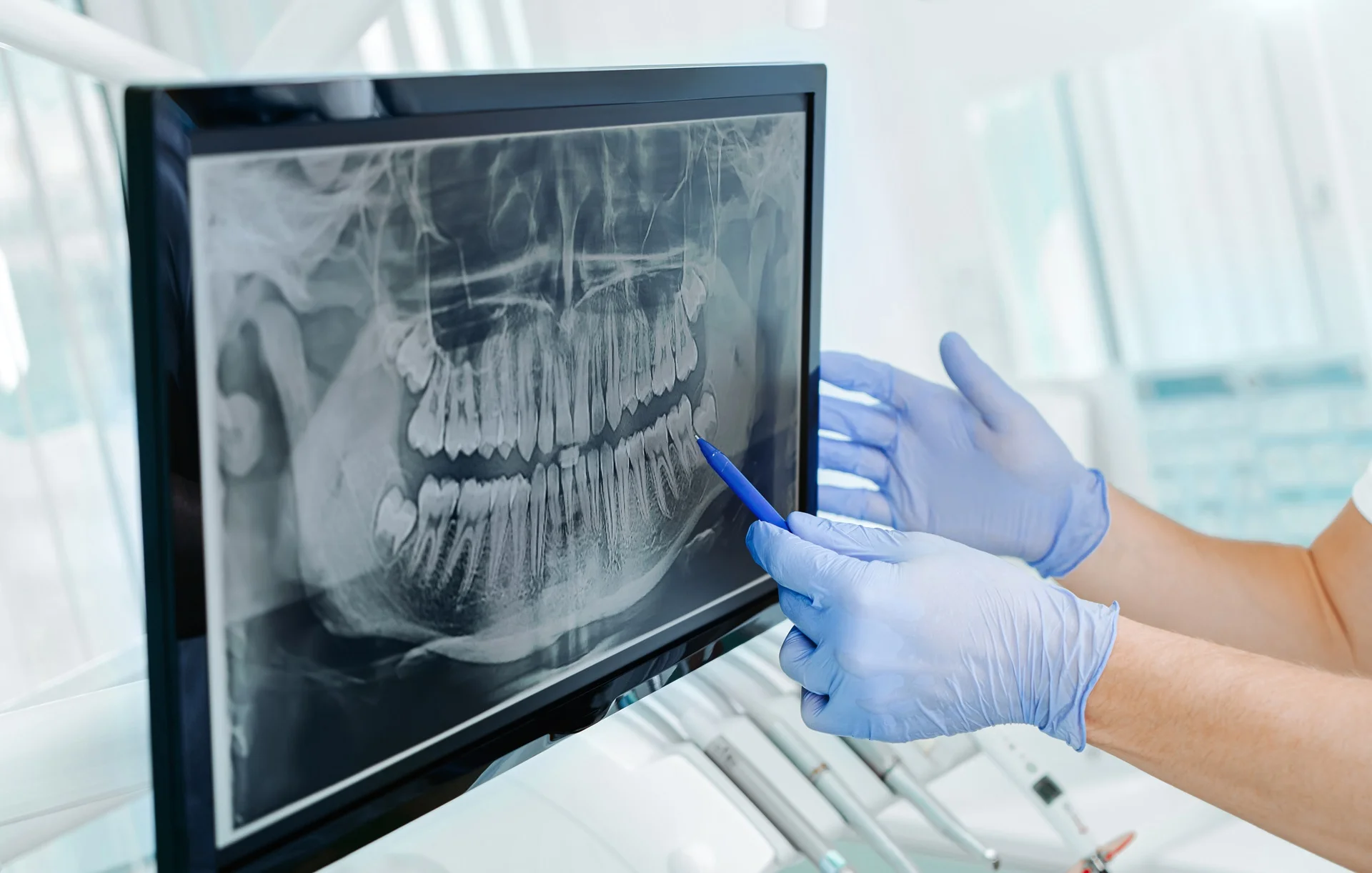Dental X-Ray in Harrisburg, NC

Tooth X-Ray in Harrisburg, NC
Dental Digital X-rays Services in Harrisburg, NC, also known as radiographs, have been integral to dental diagnosis and treatment for many years. However, with the advancement of technology, traditional film-based X-rays have primarily been replaced by digital X-rays in Harrisburg, NC. Unlike traditional photographic film, digital X-rays use sensors to photograph teeth and other structures. A computer screen can then display the images, improving diagnostic efficiency.
Digital X-rays in Harrisburg, NC, can benefit anyone who wishes to experience advanced dental imaging. The shift towards digital X-rays in dentistry has brought numerous benefits for patients and practitioners. A digital X-ray emits much less radiation than film-based X-rays, making them safer, especially for those requiring frequent imaging, such as orthodontic patients. The images produced are more transparent and can be enhanced and manipulated electronically, allowing better visualization of small details and easy sharing between professionals for consultations or referrals. Additionally, digital X-rays offer speed and convenience, instantly producing images and saving time for patients and dentists.
Advanced digital X-rays provide detailed imaging, aiding in thorough cleanings & exams and precise restorative dentistry treatments for lasting results.
Traditional vs. Digital X-rays: What's the Difference?
Radiation
One significant difference between traditional and digital X-rays is the amount of radiation exposure. Radiation levels required for traditional X-rays are higher to capture images on photographic film. In contrast, digital X-rays use significantly less radiation, making them a safer option for patients during dental appointments.
Processing
Another key difference lies in image processing. Traditional X-rays involve a lengthy process where images are developed using chemicals, taking several minutes before the final image is ready for evaluation. On the other hand, digital X-rays produce instant pictures displayed on a computer screen, allowing the dentist and the patient to evaluate them immediately.
Manipulation
Traditional X-rays are static and require physical retakes for adjustments, which can be time-consuming and uncomfortable for patients. In contrast, digital X-rays offer the advantage of being enhanced or manipulated digitally. This capability improves diagnostic accuracy and efficiency without retaking, providing a more comfortable experience for patients.
FAQ's
What are Digital X-rays?
Digital X-rays are advanced imaging techniques used in dentistry to capture detailed images of your teeth and oral structures using electronic sensors, resulting in immediate, high-quality digital pictures.
Who needs Digital X-rays?
Anyone undergoing a dental check-up or treatment may need Digital X-rays, especially those requiring frequent imaging, such as orthodontic patients or those with ongoing dental issues.
How often should I undergo Digital X-rays?
The frequency of Digital X-rays varies based on individual dental health needs; your dentist will recommend the appropriate schedule, often during routine check-ups.
What can I expect after Digital X-rays?
After Digital X-rays, expect a swift diagnosis, a clear understanding of any dental issues, and the ability to discuss treatment options immediately with your dentist.
How can I make the most of Digital X-rays?
Ensure you maintain regular dental visits and follow your dentist’s recommendations to fully benefit from the accurate and detailed imaging of Digital X-rays.
Why are Digital X-rays important?
Digital X-rays are crucial for early detection of dental issues, reducing radiation exposure, and providing clear, immediate images that aid in precise diagnosis and effective treatment planning.

